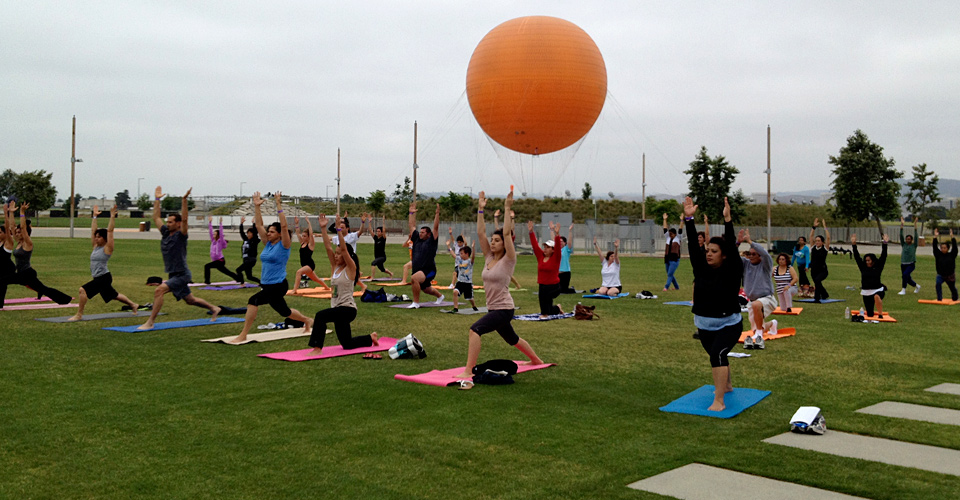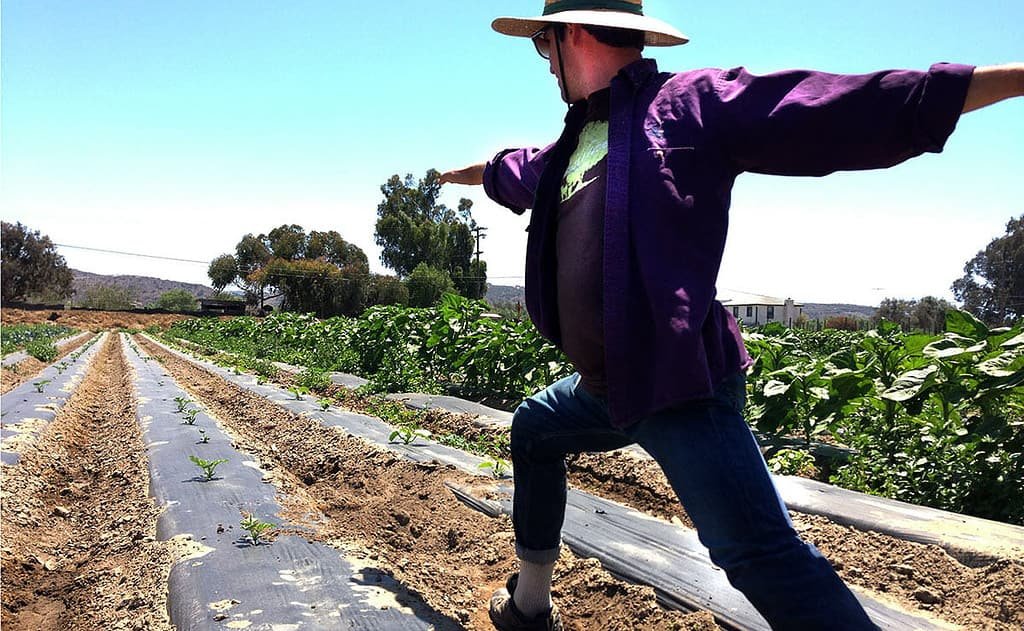Yoga for farmers is not just a trendy exercise routine; it is a practice that can significantly improve physical health, enhance mental well-being, provide relief from common farming-related issues, and increase energy and productivity.
In this article, we will explore the various ways in which yoga can benefit farmers and provide practical tips on how to incorporate yoga into a farmer’s routine.
Improved physical health
Increased flexibility and strength
Yoga is known for its ability to increase flexibility and strength. As a farmer, you often engage in physically demanding tasks that require bending, lifting, and stretching. Regular yoga practice can help you improve your flexibility, making these movements easier and reducing the risk of strains or injuries. Additionally, yoga poses that focus on building strength can help you perform tasks more efficiently and with less effort.
Improved posture and balance
Maintaining good posture and balance is crucial for farmers, as it can prevent back pain and reduce the risk of falls or accidents. Yoga poses that target the core muscles and promote proper alignment can help improve your posture and balance, allowing you to work with ease and stability.
Reduced risk of injuries
Farmers are often prone to injuries due to the physically demanding nature of their work. Yoga can help reduce the risk of injuries by strengthening the muscles, improving flexibility, and enhancing body awareness. By practicing yoga regularly, you can develop better body mechanics and learn how to move in a way that minimizes strain on your joints and muscles.
Enhanced mental well-being

Reduced stress and anxiety
Farming can be a stressful occupation, with long hours, unpredictable weather conditions, and financial pressures. Yoga provides a valuable tool for managing stress and anxiety. Through deep breathing exercises, meditation, and mindfulness techniques, yoga helps activate the body’s relaxation response, calming the mind and reducing stress levels. By incorporating yoga into your routine, you can cultivate a sense of inner peace and resilience, enabling you to better cope with the challenges of farming.
Improved focus and concentration
Farmers often need to stay focused and attentive to ensure the success of their operations. Yoga can help improve your ability to concentrate by quieting the mind and increasing mental clarity. The practice of yoga encourages present-moment awareness, allowing you to stay focused on the task at hand and make better decisions.
Increased self-awareness and mindfulness
Yoga promotes self-awareness and mindfulness, which are essential qualities for farmers. By practicing yoga, you can develop a deeper connection with your body, mind, and emotions. This heightened self-awareness can help you recognize and address any physical or mental imbalances, allowing you to take better care of yourself and make informed choices for your well-being.
Relief from common farming-related issues

Back pain and muscle tension
Back pain and muscle tension are common issues faced by farmers due to the physical demands of their work. Yoga offers effective relief for these problems through specific poses and stretches that target the back, shoulders, and hips. By incorporating these poses into your routine, you can alleviate pain, release tension, and improve overall spinal health.
Joint stiffness and arthritis
Farmers often experience joint stiffness and arthritis, especially as they age. Yoga can help improve joint mobility and reduce inflammation, providing relief from these conditions. Gentle yoga poses and movements can help lubricate the joints, increase flexibility, and alleviate discomfort.
Respiratory problems and allergies
Working outdoors exposes farmers to various respiratory problems and allergies. Yoga incorporates deep breathing exercises that can strengthen the respiratory system, improve lung capacity, and enhance overall lung function. By practicing these breathing techniques regularly, you can reduce the severity of respiratory issues and manage allergies more effectively.
Increased energy and productivity

Regular yoga practice can boost your energy levels and enhance productivity. By engaging in physical movement, deep breathing, and relaxation techniques, yoga helps improve blood circulation, oxygenation, and overall vitality. As a result, you may experience increased energy throughout the day, allowing you to accomplish tasks more efficiently and effectively.
Yoga poses and practices for farmers

Standing poses for strength and stability
– Mountain Pose (Tadasana)
– Warrior I (Virabhadrasana I)
– Warrior II (Virabhadrasana II)
– Tree Pose (Vrksasana)
Twists and stretches for back pain relief
– Cat-Cow Pose (Marjaryasana-Bitilasana)
– Child’s Pose (Balasana)
– Downward-Facing Dog (Adho Mukha Svanasana)
– Seated Forward Bend (Paschimottanasana)
Breathing exercises for stress reduction
– Deep Belly Breathing
– Alternate Nostril Breathing (Nadi Shodhana)
– Three-Part Breath (Dirga Pranayama)
Meditation and mindfulness techniques
– Mindful Sitting Meditation
– Body Scan Meditation
– Loving-Kindness Meditation
How to incorporate yoga into a farmer’s routine
Creating a dedicated yoga space
Set aside a specific area on your farm where you can practice yoga comfortably. It can be a corner of a room, a quiet spot in the garden, or even a small shed. Make sure the space is clean, clutter-free, and provides a sense of tranquility.
Setting aside time for regular practice
Allocate a specific time each day for your yoga practice. It can be in the morning to start your day with energy or in the evening to unwind and relax. Consistency is key, so aim for at least 15-30 minutes of practice every day.
Here’s a recommended yoga schedule tailored for farmers:
Daily Morning Routine:
- Warm-up (5-10 minutes):
- Start with gentle joint rotations, neck stretches, arm circles, and ankle rolls to warm up the body.
- Pranayama (10 minutes):
- Practice deep breathing exercises such as Anulom Vilom, Nadi Shodhana, or Ujjayi breathing to increase lung capacity and reduce stress.
- Sun Salutations (Surya Namaskar) (15 minutes):
- Perform a few rounds of Sun Salutations to warm up the body, improve flexibility, and build strength.
- Standing Poses (15 minutes):
- Include poses like Tadasana (Mountain Pose), Trikonasana (Triangle Pose), and Virabhadrasana (Warrior Pose) to improve balance and strengthen the legs and core.
- Seated Poses (10 minutes):
- Incorporate poses like Sukhasana (Easy Pose), Padmasana (Lotus Pose), or Vajrasana (Thunderbolt Pose) for grounding and focus.
Weekly Routine:
- Day 1 (Monday): Focus on Hip Openers and Lower Body Strength
- Include poses like Pigeon Pose, Malasana (Squat Pose), and Baddha Konasana (Butterfly Pose).
- Day 2 (Tuesday): Core Strengthening and Twists
- Include poses like Boat Pose, Plank Pose, and Bharadvajasana (Seated Twist).
- Day 3 (Wednesday): Rest and Relaxation
- Engage in gentle stretches, deep breathing, or relaxation techniques to rejuvenate the body.
- Day 4 (Thursday): Backbends and Heart Openers
- Incorporate poses like Bhujangasana (Cobra Pose), Ustrasana (Camel Pose), or Setu Bandhasana (Bridge Pose).
- Day 5 (Friday): Shoulder and Upper Body Stretch
- Include poses like Gomukhasana (Cow Face Pose), Garudasana (Eagle Pose), and Marjarasana (Cat-Cow Pose).
- Day 6 (Saturday): Balance and Focus
- Practice poses like Vrksasana (Tree Pose), Ardha Chandrasana (Half Moon Pose), and Bakasana (Crow Pose).
- Day 7 (Sunday): Gentle Yoga and Mindfulness
- Engage in gentle stretching, restorative poses, meditation, or yoga nidra to promote relaxation and mental well-being.
Tips:
- Modify poses based on your comfort and ability.
- Listen to your body and avoid overexertion.
- Stay consistent with your yoga practice to experience the benefits over time.
- Consider seeking guidance from a certified yoga instructor for proper technique and alignment.
Joining yoga classes or finding online resources
Consider joining a local yoga class or finding online resources tailored for farmers. Yoga classes provide guidance, support, and the opportunity to connect with like-minded individuals. Online resources, such as instructional videos or yoga apps, can also be helpful for practicing at your own convenience.
Conclusion

Incorporating yoga into a farmer’s routine can bring numerous benefits, including improved physical health, enhanced mental well-being, relief from common farming-related issues, increased energy, and productivity.
By dedicating time to practice yoga regularly and incorporating specific poses and techniques, farmers can experience a positive transformation in their overall well-being. So, why not give yoga a try and reap the rewards it can bring to your life as a farmer?
Originally posted 2023-07-26 18:32:34.





